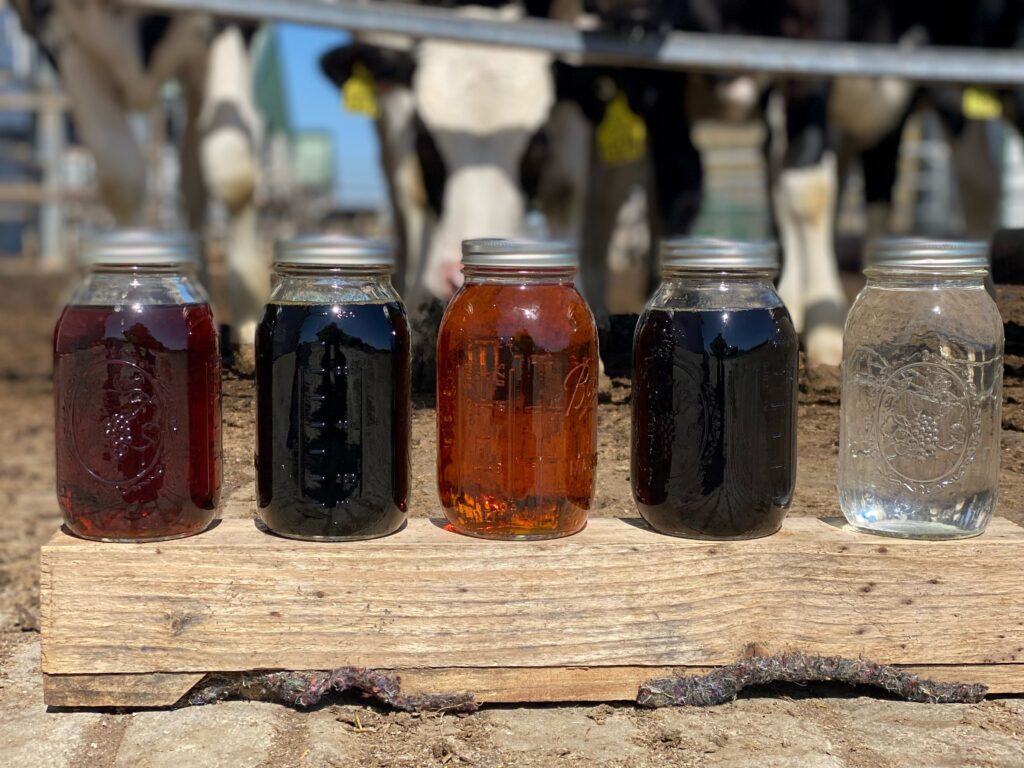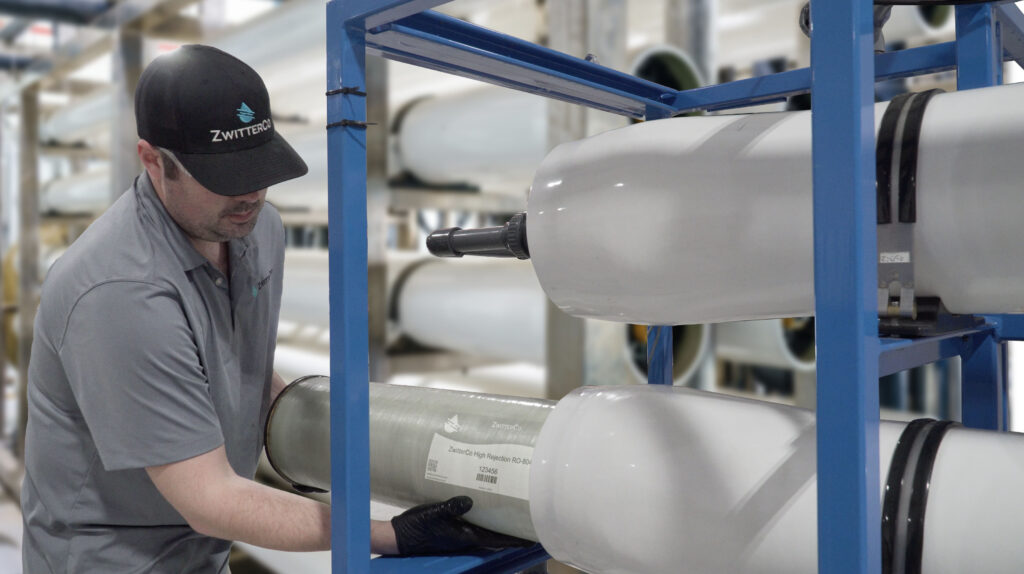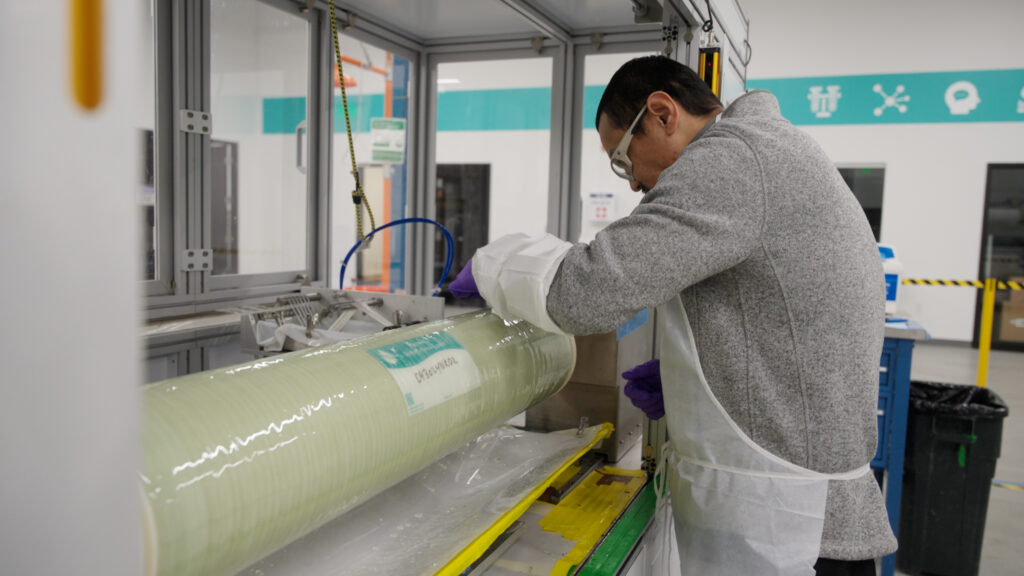For more than forty years, reverse osmosis (RO) has been a leading method for water purification, representing a significant advancement in sustainable water treatment. In a rapidly changing world, RO technology has struggled to keep up, seeing little to no innovation since the introduction of the polyamide membrane.
With water stress increasing in regions throughout the world, reliable and cost-effective water reuse is becoming a critical need. This is especially true for industrial wastewater, where water-intensive industrial processes increasingly compete with municipal and agricultural demands and may see production decrease due to a lack of accessible water resources.
A study conducted in 2023 reviewing recent progress in global water reuse stated, “By 2030, global water consumption may grow to ~160% of the currently available volume.” A change is needed to prevent a global water crisis. More specifically, a change in material science for membranes is long overdue. Now, the rise of a new era in water treatment is here, driven by the innovative chemistry of zwitterions.
As the need for clean water grows, zwitterionic membranes offer a new way to tackle the challenges of water treatment, offering hope for a more sustainable future. This ground-breaking technology, immune to irreversible fouling, is already transforming industries such as dairy wastewater, manure digestate, food digestate, poultry wastewater, and more. Applicable to various other applications, zwitterionic membranes are versatile and have the potential to revolutionize water treatment, bringing us closer to achieving clean water for all.
Diving Deep: What are Zwitterionic Copolymers?
So, how did zwitterions become the technology that will save the world’s unusable water? Let’s explore the science behind them. Copolymers and polymers are crucial in material chemistry, forming the foundation of modern manufacturing. Polymers, composed of repeating monomer units, can be natural (like proteins) or synthetic (like polyethylene). Copolymers, on the other hand, contain multiple types of monomers. Manipulating these materials significantly affects traits like strength and flexibility. For example, in ultrafiltration (UF), the most commonly used polymers are PVDF (polyvinylidene fluoride) and PES (polyethersulfone), valued for their durability and filtration properties.
So, where do these remarkable zwitterions fit into water treatment? Simply put, a zwitterion is a molecule that carries both positive and negative charges, which balance each other out, resulting in a molecule which is simultaneously ionized and electrically neutral. Certain zwitterions are also part of organic molecules which can undergo polymerization reactions. Careful selection of these zwitterionic monomers can result in a class of very unique materials: hydrophilic copolymers incorporating zwitterionic functional groups. These materials can form the building blocks of advanced membrane technology with capabilities that can change the paradigm in water reuse.
The Benefits of Zwitterions in Water Treatment
Zwitterions are almost like nature’s own non-fouling material, known for resisting unwanted buildup on their surfaces. This quality is especially crucial in water and wastewater treatment, where membrane life is directly related to how often it is cleaned to remove organic or biofouling substances. Just by integrating zwitterions into water membranes, the efficiency and lifespan are significantly enhanced, as well as other perks like:
1. Enhanced Membrane Longevity
Zwitterions significantly reduce the buildup of biofouling and other organic materials on the surfaces of membranes, extending the membrane life.
2. Improved Permeability
Zwitterions are highly hydrophilic, which improves permeability. By resisting organic fouling and biofouling, zwitterionic membranes keep water flowing at higher rates for longer compared to traditional membranes, ensuring efficient water treatment processes.
3. Cost Efficiency
Zwitterionic membranes reduce the need for harsh cleanings, which in turn lowers the need for membrane replacement. With less downtime, lower maintenance, less chemical usage, and lower replacement costs, overall operational costs are significantly reduced.
4. Broad Spectrum of Application
The non-fouling characteristics of zwitterions make them a revolutionary advancement for various types of water and wastewater treatment, including wastewater reuse. Being extremely hydrophilic, they repel organic species like fats, oils, grease, and proteins.
5. Increased Consistency
The ability of zwitterionic membranes to resist fouling offers more consistent and effective removal of contaminants, enabling higher quality purified water and reduced system downtime.

Zwitterions and Membranes: A New Frontier
The question is no longer if zwitterions should be used in water and wastewater treatment processes, but how to successfully use them to their full potential. While the chemistry is intriguing, turning their potential into real progress has been an uphill battle.
Overcoming Historical Hurdles
Zwitterionic materials have been long recognized as a promising chemistry for anti-fouling surfaces, but practical solutions to incorporate zwitterionic materials into water treatment membranes have been elusive. Temporary surface treatments have in general been ineffective at truly “moving the needle” on membrane fouling, particularly since they do not address the absorption of oil and other foulants in the interior of the porous membrane structure.
Building new membranes out of zwitterionic material proved to be an unsolved problem for many years. Hydrophilic (“water-loving”) materials are incompatible with traditional phase-inversion membrane manufacturing processes, and from a chemistry standpoint the difference between “hydrophilic” and “water-soluble” is sometimes very subtle. However, in 2013, researchers at Tufts University made a breakthrough, discovering that specialized copolymers combining zwitterionic monomers with hydrophobic monomers could yield stable materials with the astonishing ability to form self-assembled pore structures. In 2018, ZwitterCo was formed with a mission to scale up and commercialize this promising technology.
Self-assembling zwitterionic copolymers opened the door to a new class of membrane materials utilizing permanent zwitterionic structures with predictable and controllable pore size. Unlike a “coating” which would eventually wash off over a membrane’s lifetime, zwitterions could be made a part of the active membrane layer. This breakthrough led to very stable membrane layers with nanometer-scale pores that effectively repelled organic substances like fats, oils, and grease. This means that they’re also easier to clean with water or mild chemical agents.
The polymeric membranes crafted from these zwitterionic copolymers aren’t just another step in water filtration—they’re revolutionary for the reuse of water and saving the planet.
ZwitterCo Superfiltration: Going Where No Membrane Has Gone Before
Using zwitterionic copolymers changes the game for membrane technology. By doing so, ZwitterCo has defined a new separation class between ultrafiltration and nanofiltration: superfiltration. The zwitterionic superfiltration membrane, engineered for high-fouling, industrial streams, delivers unprecedented fouling resistance, low energy requirements, a wide pH tolerance, and the ability to be cleaned with chlorine.
High-strength wastewater – such as that found in the treatment of dairy wastewater, digestate, and meat and poultry – often couldn’t be treated with traditional membranes due to organic fouling challenges. ZwitterCo superfiltration has made this a problem of the past by going where no membrane has gone before.
ZwitterCo SF membranes are designed for separating dissolved and undissolved components, like capturing proteins while passing inorganic molecules. The membranes are engineered tightly enough to remove fats, oils, grease (FOG), and high-strength organics, providing ideal pre-treatment for reverse osmosis in wastewater, even in the world’s toughest streams.
An RO Element, but Better: ZwitterCo RO Membranes
In addition to superfiltration, ZwitterCo has made revolutionary advancements in creating a sustainable and functional zwitterionic RO membrane, standing at the forefront of this revolution to transform industrial water treatment on a global scale.

ZwitterCo RO elements, available in standard industry sizes, seamlessly integrate into existing systems without requiring additional equipment or modifications. Installation and operation are as straightforward as with any other RO membrane, but with better performance and reduced maintenance. With a 30-minute freshwater rinse, or a short caustic wash, the membrane is fully regenerated back to its starting performance. By lowering operating costs and cleaning frequency by up to 90%, it enables systems to operate at maximum capacity with minimal downtime.
The rise of zwitterionic technology into water treatment membranes marks a significant shift in an industry long overdue for change, unlocking new possibilities in areas where success has historically been hard to achieve. In the past, combining advanced materials with water treatment solutions faced challenges and often failed in real-world situations. Now, a new material in this field—zwitterions—could change what’s possible. Zwitterionic chemistry may be intricate, but its impact offers hope for a future of water abundance and cleaner, sustainable water globally.
Embrace the change—contact us to discover how zwitterionic membranes can revolutionize your operations.
Sources:
- Global water shortages are looming. Here is what can be done about them.
- https://viceprovost.tufts.edu/membranes-zwitterion-containing-copolymer-selective-layers
- gov
- Abou-Shady, A.; Siddique, M.S.; Yu, W. A Critical Review of Recent Progress in Global Water Reuse during 2019–2021 and Perspectives to Overcome Future Water Crisis. Environments 2023, 10, 159. https://doi.org/10.3390/environments10090159




